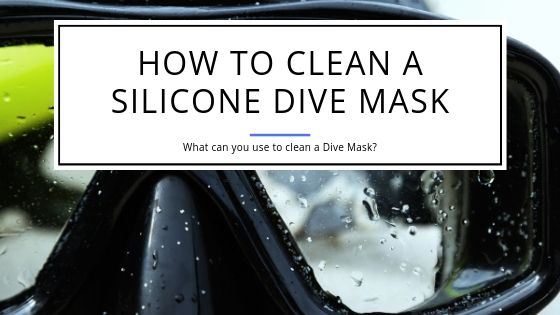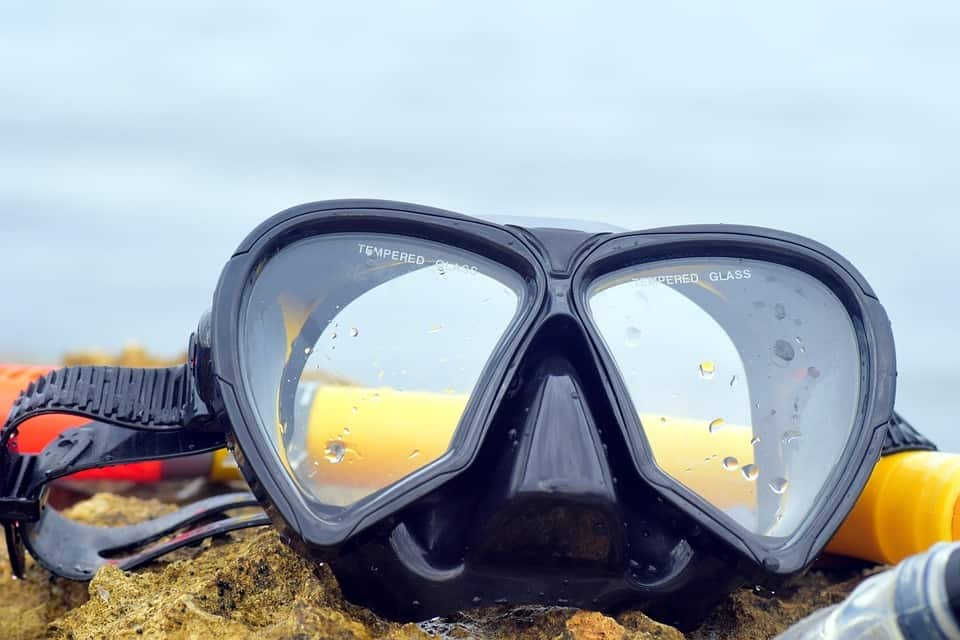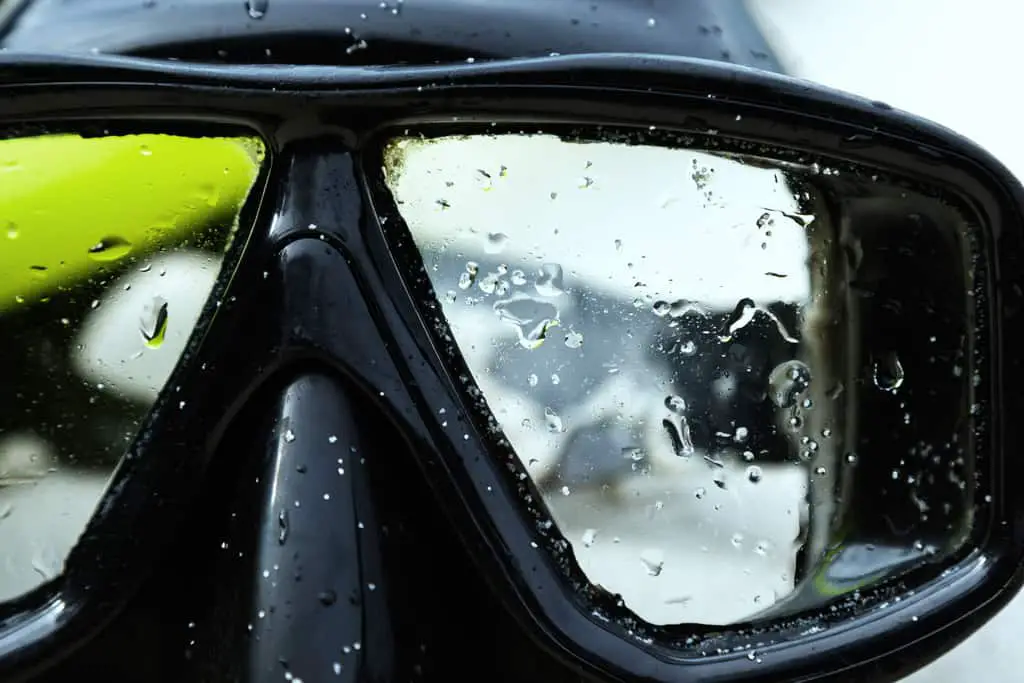How to Clean a Silicone Dive Mask
Having the right scuba gear is essential for divers. But to make sure your gear lasts long, keeping it in good shape is important. One necessary component of your scuba gear is the dive mask. This not only protects your eyes, but it also helps you see clearly underwater.
It is crucial to follow the proper maintenance measures to ensure that you clean your dive mask without getting any scratches on the lens and without stretching out or tearing the silicone.
What Part of a Dive Mask is Silicone?
The skirt, straps and bands of the dive mask are usually made of silicone (there are also rubber mask options available). The lens may be made of either glass or plastic. Different parts of the mask can be cleaned using different methods. However, if any part of the mask is destroyed, you will need to replace the entire mask.
What Does the Skirt Do?
The basic purpose of the skirt is to act like a second skin and help the mask seal on to your face so that water can’t get in. Although expensive, silicone masks are comfortable on the face (as opposed to the plastic ones) and hence, are a preferred choice for most divers.
Clear vs. Opaque Skirts
Clear mask skirts give divers better peripheral vision underwater, which can be particularly useful if you’re diving in murky, cloudy waters. Since they allow more light to enter, they also feel more open and comfortable to wear.
Opaque masks prevent your eyes from being affected by the sun’s glare and are ideal for underwater photographers. However, the dark frame can feel a bit claustrophobic at times, especially if you’re diving at night.
How Do You Clean the Silicone Parts of a Dive Mask?
Constant and frequent exposure of silicone to sunlight and humidity can cause it to harden, discolor and lose its shape so that the mask won’t seal properly.
Fortunately, there are a few ways you can revive discolored silicone and prevent it from attaining further damage.
How to Clean a Yellowed Dive Mask
Exposure to water and humidity over the years can cause clear silicone to turn yellow. In some cases, this yellowing can be cleaned off using basic cleaning items that you probably already have at home. If the discoloration is very severe, it may also be a sign that your mask is too old and needs to be replaced. This is because over the years, the silicone stretches out and may not be able to seal properly on your face.
If you are planning to fix your yellowing mask, here is what you can do:
Can You Use Bleach to Clean a Snorkel or Dive Mask?
Bleach can be used to clean the silicone, but make sure that the lens is properly covered as you work so that it doesn’t get damaged. Also, make sure that you dilute the bleach with water since concentrated bleach can damage your mask. Avoid using chlorine bleach on your mask since it can cause discoloration and the silicone to harden.
Start off by scrubbing the silicone with some soapy water and drying it off. Next, fill a spray bottle with bleach and spray the silicone of the dive/snorkel mask. Let it sit for around 15-20 minutes. This will kill the mold and clear the yellow color.
Wear rubber gloves the entire time you’re working with bleach. Rinse the mask with cold water and wipe it with a soft cloth to get rid of any residue.
Get Your Mask Serviced
If your mask has been sitting inside a cardboard box at the back of your closet, you’ll need to get it serviced by your local dive shop before it can be used again. Especially, if it’s been there since forever, you’ll need to get it serviced so that it seals properly and doesn’t fog up when you finally get into the water.
Use Toothpaste
Apart from defogging your lens, the abrasive agents in the toothpaste can also help remove the yellowing from a clear silicone mask. Rub the toothpaste on the silicone, let it sit for around 15 minutes and rinse it off. Clean the mask with a soft cloth to get rid of any residue.
This method may not be 100% effective if the mask is very old.
Store Your Mask Properly
Keep your mask in an airtight space, away from any rubber items (since they can cause color bleeding) and liquid items, such as moisturizer, suntan lotion, and so on.
Use a Black Mask
A black silicone mask doesn’t discolor or soak up color from rubber/neoprene items. They also experience less glare from the sun.
You will still, however, need to service the mask. Even if the silicone doesn’t discolor, it can still get damaged and brittle.
Getting Rid of Mold
Black mold can start creeping in on the edges of your mask. Mouthwash can be used to kill the mold, but make sure you don’t leave it on for too long and that you rinse and clean it off properly. The chemicals in mouthwash can be corrosive and can eat away at the silicone if it’s left on for too long.
If you’re using a black mask, you’ll have to be extra careful since the mold won’t be visible on the black surface. As long as you service your mask properly and regularly, you shouldn’t have a problem.
What Parts Other than the Silicone Need to Be Cleaned?
Apart from the skirt, straps and bands, the lens of the mask also needs to be cleaned and defogged regularly.
How Do You Clean a Scuba Mask With Toothpaste?
Common household items, such as toothpaste can be used to clean your dive mask. The abrasive texture of the toothpaste makes it great for defogging your mask. It is recommended that you use regular white toothpaste instead of the gel paste.
Toothpaste can only be used on masks with a glass lens. Dive masks with a plastic lens can get scratched easily if you use any kind of abrasive material on them, and they usually have an anti-fog layer already in place.
Simply take a pea-sized amount of toothpaste and rub it on both sides of the lens (the mask should be completely dry when you do this). Rub it in with your fingers in a circular motion.
Rinse the lens and rub at the toothpaste simultaneously. You may need to use a small washcloth to get into the tighter, cramped spaces. Once all the toothpaste is gone, dry the lens completely.
These steps have to be repeated 5-7 times to completely defog your lens. Once you’re done, dry your mask completely before storing it/using it. This defogging process needs to be performed regularly after a few dives.
A Word of Caution
It is recommended to avoid using toothpaste with any prominent flavor, such as mint that can potentially make your eyes sting a little. However, as long as you’ve been thorough in getting all the toothpaste out, you should be fine.
Other Alternatives
Items such as baby shampoo can be used as an alternative to toothpaste. Perform the same steps that you would follow if you were using toothpaste and it’ll get the job done.
Precautionary Tips to Prevent Damaging Your Mask
Apart from properly cleaning and defogging your mask, you also need to be careful when handling it to ensure that the surface doesn’t get scratched and damaged.
Rinse Your Mask Post-Dive
Never place your mask lens-side down on the sand or your dive boat. Sand, dirt and grit can permanently damage the lens, making it difficult for you to see underwater. After your dive, rinse your mask, dry it with a microfiber cloth and store it in your dive bag to keep it out of harm’s way.
Salt and grit can ruin the silicone of your mask. If you’re performing multiple dives per day, instead of rinsing your mask, just douse it with a bucket of fresh water to remove any grit and dirt particles between dives.
Keep Your Mask Away from Sunlight
Prolonged exposure to sunlight causes malleable, transparent silicone to turn yellow, hard and degrade significantly over time. Mask bands and straps may become brittle and snap. Store your mask in a well-sealed container, away from sunlight. It is also advisable to keep a silica gel packet in the container to keep any excess moisture out.
Although it might seem a bit odd to keep moisture at bay when masks are meant to be worn underwater, it is the constant and prolonged exposure to humidity that can damage the mask.
Final Thoughts
Although dive masks are often one of the less expensive items in your scuba kit, they’re also one of those items that need to fit perfectly. Even if you’re traveling and renting your scuba equipment, you’re likely to keep your own dive mask. This is why it is essential to keep your silicone dive mask clean.




